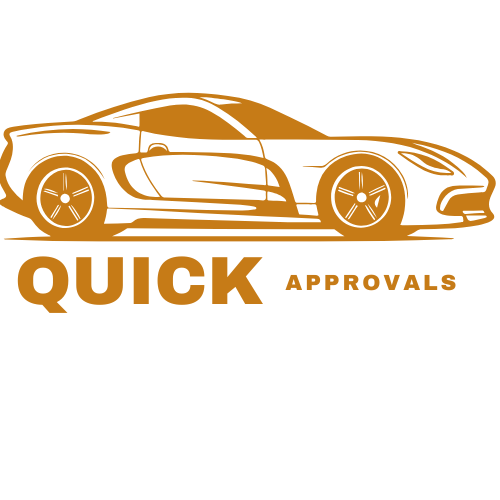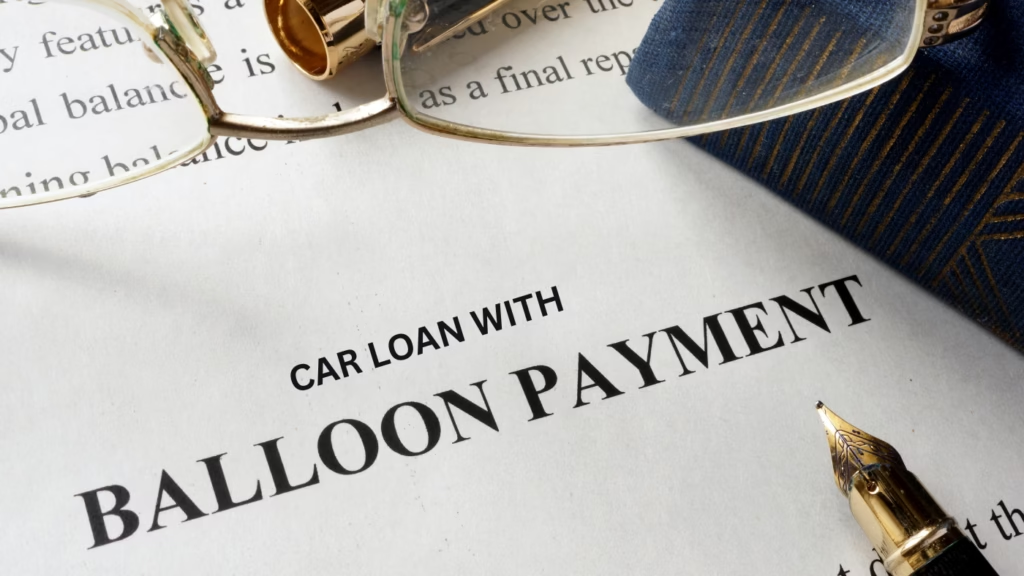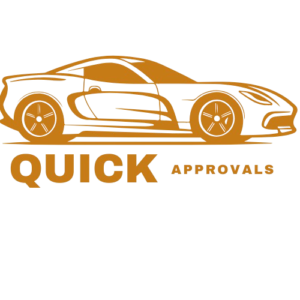A car loan with balloon payment Canada offers a unique financing option for Canadians looking to purchase a vehicle while managing monthly expenses. This loan structure allows borrowers to make lower monthly payments throughout the loan term, with a significant final payment—known as the balloon payment—due at the end. This approach can make car ownership more affordable in the short term, particularly for those with tight budgets or those seeking a more expensive vehicle. However, it requires careful financial planning to handle the large final payment, which can range from 20-40% of the loan amount. In Canada, these loans are legal but must comply with strict disclosure regulations to ensure transparency.
car loan with balloon payment Canada, This guide explores how these loans work, their benefits, risks, and practical strategies for managing them, drawing on authoritative resources like the Financial Consumer Agency of Canada and insights from major Canadian lenders. For personalized financing options, visit QuickApprovals.ca.
How Does a Balloon Payment Work for Car Loans in Canada?

A balloon payment car loan is structured to reduce monthly payments by deferring a portion of the loan principal to the end of the term. Unlike traditional car loans, where the entire loan amount is amortized evenly over the term, a balloon payment loan splits the repayment into smaller monthly installments and a large final payment. For example, consider a $30,000 car loan with a 5-year term and a 30% balloon payment:
- Loan Amount: $30,000
- Balloon Payment: $9,000 (30% of the loan)
- Amount Amortized: $21,000
- Interest Rate: 5% (estimated)
- Monthly Payment: Approximately $396 over 60 months (compared to $566 for a standard loan)
The monthly payments cover the $21,000 plus interest, while the $9,000 balloon payment is due at the end of the term. This structure lowers monthly costs but requires the borrower to plan for the final payment, which could be paid in cash, refinanced, or covered by selling the vehicle.
Lenders like Royal Bank of Canada (RBC), Toronto-Dominion Bank (TD), and Scotiabank offer such loans, often requiring a minimum credit score of around 650, with 700+ preferred for better rates. Borrowers should use a car loan calculator with balloon payment Canada to estimate payments and ensure the loan fits their budget.
Benefits of a Car Loan with Balloon Payment Canada

This financing option offers several advantages, making it appealing for certain borrowers:
- Lower Monthly Payments: By deferring a portion of the loan, monthly payments are significantly reduced, freeing up cash flow for other expenses or savings.
- Affordability of Higher-End Vehicles: Lower payments may allow borrowers to finance a more expensive car than they could with a traditional loan. For instance, a $40,000 car might be affordable with monthly payments of $450 instead of $650.
- Flexibility at Loan Maturity: At the end of the term, borrowers can pay the balloon payment, refinance it, or, in rare cases, return the vehicle (though this is more common with leases).
- Shorter Commitment: Balloon loans often have shorter terms (e.g., 2-4 years), allowing borrowers to reassess their finances sooner than with a 5-7-year traditional loan.
These benefits make car loans with balloon payments Canada attractive for those with stable incomes who can plan for the final payment.
What Are the Risks of a Balloon Payment Car Loan in Canada?
While appealing, balloon payment loans come with notable risks: best car loans with balloon payments Canada
- Large Final Payment: The balloon payment can be substantial (e.g., $9,000 on a $30,000 loan), posing a challenge if the borrower’s financial situation changes.
- Negative Equity Risk: Cars depreciate rapidly, and if the vehicle’s value falls below the balloon payment, borrowers may owe more than the car is worth, complicating sales or trade-ins.
- Higher Interest Costs: Because the principal is reduced more slowly, borrowers may pay more interest over the loan term compared to a standard loan.
- Refinancing Challenges: Securing a new loan to cover the balloon payment may be difficult if credit scores decline or interest rates rise.
- Limited Availability: Not all lenders, especially major banks, offer best car loans with balloon payments Canada, and those that do may have stricter eligibility criteria.
Borrowers must weigh these risks carefully and ensure they have a plan to manage the final payment.
Legal Framework for Are Balloon Payments Legal for Car Loans in Canada?
In Canada, are balloon payments legal for car loans in Canada is a common question, and the answer is yes. However, lenders must adhere to the Cost of Borrowing (Disclosure) Regulations under federal and provincial laws. These regulations, overseen by the Financial Consumer Agency of Canada, require lenders to provide a clear disclosure statement before the borrower signs the agreement. This statement must detail:
- Total loan amount
- Annual percentage rate (APR)
- Total cost of borrowing, including the balloon payment
- Payment schedule and any fees
This ensures transparency, allowing borrowers to understand their obligations fully. For example, a lender must clearly state if a $30,000 loan includes a $9,000 balloon payment. Borrowers should review these documents carefully and consult resources like QuickApprovals.ca for guidance on loan terms.
Alternatives to Car Loan with Balloon Payment Canada
For those hesitant about balloon payments, several alternatives exist:
- Traditional Car Loans: These involve equal monthly payments over the loan term, with no final lump sum. While monthly payments are higher, they offer predictability and no large final payment.
- Leasing: Leasing provides lower monthly payments and the option to return the vehicle at the end of the term, avoiding ownership responsibilities. However, mileage restrictions and wear-and-tear conditions apply.
- Short-Term Loans: A shorter loan term (e.g., 3 years) reduces interest costs but increases monthly payments.
- Used Car Loans: Financing a used car can lower the overall loan amount, making payments more manageable without a balloon structure.
Comparing these options using tools like a car loan calculator with balloon payment Canada can help borrowers make informed decisions.
Strategies to Manage the Final Payment on a Balloon

Managing the balloon payment requires proactive planning. Here are effective strategies:
- Save Regularly: Set up a dedicated savings account and automate monthly transfers to cover the balloon payment. For a $9,000 balloon, saving $150 monthly over 5 years can cover it.
- Monitor Vehicle Value: Track the car’s depreciation to avoid negative equity. Websites like Canadian Black Book can provide resale value estimates.
- Explore Refinancing: Research refinancing options early, as some lenders, like Scotiabank, allow spreading the balloon payment over a new term, though additional interest may apply.
- Consider Gap Insurance: This protects against negative equity in case of vehicle loss or theft.
- Use Calculators: Tools like those on QuickApprovals.ca can help estimate the balloon payment and plan savings.
These strategies ensure borrowers are prepared for the final payment, reducing financial stress.
Q&A: Common Questions About Car Loan with Balloon Payment Canada
What Is a Balloon Payment on a Car Loan in Canada?

A balloon payment is a large final installment due at the end of a car loan term, after smaller monthly payments. It typically ranges from 20-40% of the loan amount, negotiated with the lender at the start.
How Does a Balloon Payment Work for Car Loans in Canada?

The loan is structured with lower monthly payments covering a portion of the principal plus interest, with the remaining balance paid as a lump sum at the end. For example, a $25,000 loan with a 25% balloon payment would have $18,750 amortized over the term, with $6,250 due at the end.
Are Balloon Payments Legal for Car Loans in Canada?

Yes, they are legal, provided lenders comply with the Cost of Borrowing (Disclosure) Regulations, which mandate clear disclosure of all costs, including the balloon payment, before the agreement is signed. Learn more at the Financial Consumer Agency of Canada.
What Are the Risks of a Balloon Payment Car Loan in Canada?
Risks include the challenge of affording the large final payment, potential negative equity if the car’s value drops significantly, higher overall interest costs, and difficulties in refinancing if financial circumstances change.
How Can I Manage the Final Payment on a Balloon Car Loan in Canada?
Save regularly in a dedicated account, monitor the car’s resale value, explore refinancing options, and consider gap insurance to mitigate risks. Using a car loan calculator with balloon payment Canada can help plan effectively.
Can I Return the Car to Avoid the Balloon Payment?
Unlike leases, standard car loans in Canada typically require the borrower to pay the full loan amount, including the balloon payment. Returning the car is not usually an option, but selling it or refinancing may be viable solutions.
What Happens if I Default on the Balloon Payment?
Defaulting can lead to vehicle repossession, credit score damage, and additional fees. Contacting the lender early to discuss options like refinancing can prevent these outcomes.
Conclusion
A car loan with balloon payment Canada can be a strategic choice for Canadians seeking lower monthly payments, but it demands careful planning to manage the substantial final payment. By understanding the loan’s structure, weighing its benefits against risks like negative equity and refinancing challenges, and leveraging tools like car loan calculators with balloon payment Canada, borrowers can make informed decisions.
Comparing offers from lenders like RBC, TD, or Scotiabank, and exploring resources at QuickApprovals.ca, can further guide borrowers. For authoritative insights, consult the Financial Consumer Agency of Canada. With diligent preparation, a car loan with balloon payment Canada can align with your financial goals while minimizing risks.


